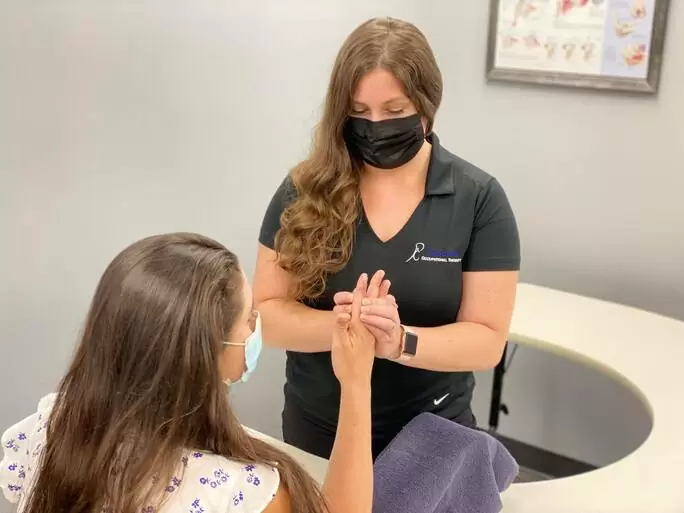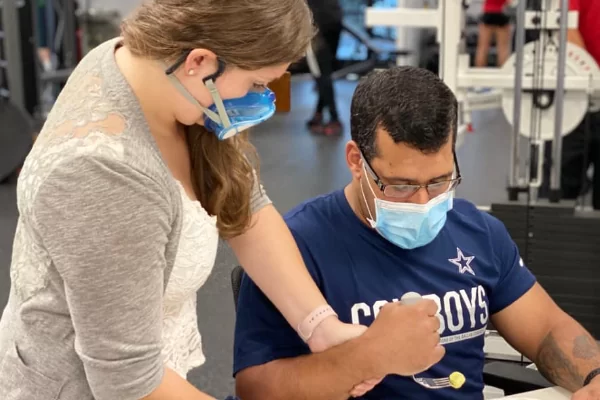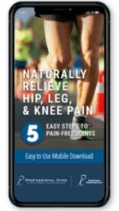DeQuervain Tendinopathy
What Is DeQuervain tendinopathy?
DeQuervain tendinopathy involves the tendons that run along the thumb side of the wrist. Tendons anchor muscle to bone, and the tendons associated with this condition help to pull the thumb out and away from the palm. These tendons travel under a “tunnel,” known as the first dorsal compartment, as they approach the base of the thumb. The patient will notice pain in this area as wrist and thumb motions move the tendons back and forth under the tunnel.
What are the symptoms of DeQuervain tendinopathy?
Pain will be noted along the thumb side of the wrist, and can extend down the thumb or up the forearm. Patients will complain of pain when reaching across the palm with the thumb, pinching or with movements of the wrist. A twisting motion, such as wringing out a washcloth, can also create pain.
What causes DeQuervain tendinopathy?
DeQuervain tendinopathy, also known as DeQuervain tendonitis or DeQuervain tenosynovitis, is thought to be from thickening and narrowing of the first compartment tunnel, or may occur because of inflammation or degeneration of the tendons of the first compartment. This then restricts the thumb tendons from gliding freely and smoothly through the tunnel. It can be associated with overuse, or may develop for no apparent reason. New mothers can develop DeQuervain tendinopathy, thought to be caused by swelling and hormonal changes that occur with pregnancy and delivery.
What is the treatment for DeQuervain tendinopathy?
Treatment for DeQuervain’s can be surgical or conservative (non-operative). Conservative treatments a physician might recommend include anti-inflammatory medications or a steroid injection into the painful area. A physician can also provide a referral to a qualified hand therapist for an evaluation. Surgical intervention might be recommended for severe symptoms lasting six months or longer. Surgery involves an incision to open up the first compartment tunnel to restore smooth gliding of the thumb tendons. Most patients do not need surgery and can be successfully treated conservatively.
What can a hand therapist do for me?
A hand therapist can provide conservative treatment for DeQuervain tendinopathy. The therapist can help the patient determine which activities aggravate the symptoms and help with activity modification. The therapist may recommend a custom-fabricated orthosis, for the wrist and thumb to provide rest for the injured tissues. Following surgery, hand therapy is important to restore range of motion and return the patient to full activity.
If you are struggling with DeQuervain tendinopathy, contact our team at Professional Care Physical Therapy and ProCare Occupational Therapy in Riverhead, NY and East Patchogue, NY for a visit and let’s get you on the road to recovery.




